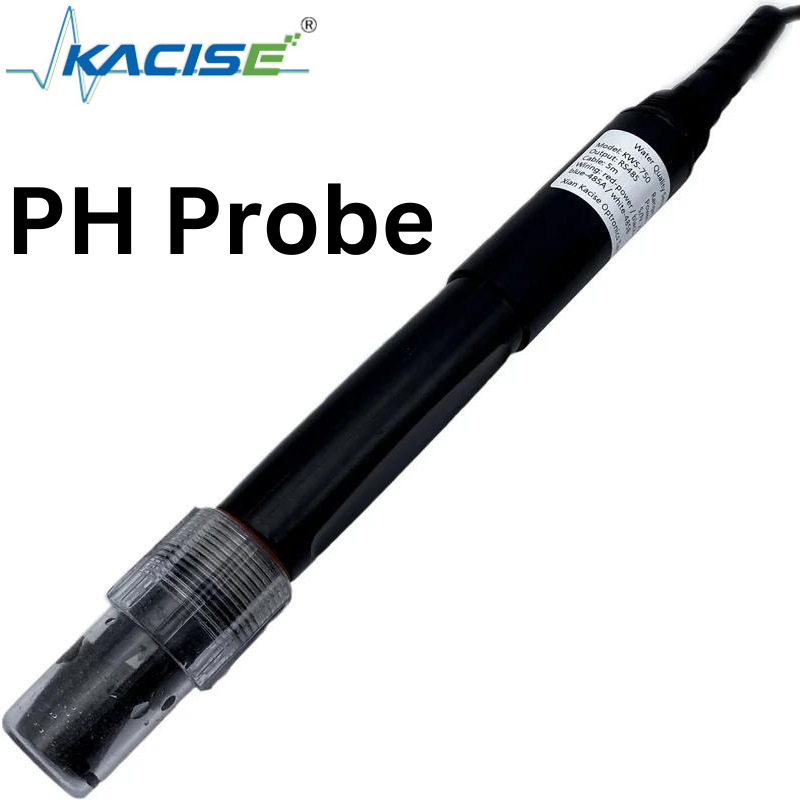
pH probes are essential tools in numerous fields, ranging from environmental monitoring to food production, and even scientific research. Understanding how they work and the importance of their role can significantly improve processes and decision-making. In this guide, we will explore the fundamentals of pH probes, their applications, and how to properly maintain them for accurate results.
What is a pH Probe?
A pH probe is a specialized sensor designed to measure the acidity or alkalinity of a liquid solution. It typically consists of a glass electrode that interacts with the solution, providing a voltage proportional to the pH level. This voltage is then translated into a digital reading, often displayed on a connected meter. The pH scale ranges from 0 to 14, with values below 7 indicating acidity, values above 7 indicating alkalinity, and 7 being neutral.
How Does a pH Probe Work?
The operation of a pH probe is based on the concept of electrochemical reactions. The probe contains two electrodes: a reference electrode and a measuring electrode. The measuring electrode is typically made of a thin glass membrane, which is sensitive to hydrogen ions (H+). When the probe is immersed in a solution, the hydrogen ions in the solution interact with the glass membrane, creating a potential difference between the inner and outer parts of the probe.
This potential difference is then measured and translated into a pH value by a connected meter. The accuracy of the pH probe depends on factors such as the calibration of the probe, the condition of the electrodes, and the temperature of the solution being measured.
Applications of pH Probes
The versatility of pH probes makes them indispensable across a variety of industries:
-
Environmental Monitoring: pH probes are widely used in water quality testing to monitor the health of natural water bodies. In both fresh and saltwater environments, pH is an important indicator of pollution levels and ecosystem health.
-
Agriculture: Farmers use pH probes to monitor the soil’s acidity or alkalinity, which directly affects the availability of nutrients to plants. Proper pH levels ensure optimal crop growth and yield.
-
Food and Beverage Industry: pH plays a crucial role in food preservation, fermentation, and flavor. In industries like brewing, dairy, and winemaking, pH probes help maintain consistency and safety in production.
-
Laboratories and Research: Scientists use pH probes to accurately measure the pH of solutions in chemical reactions, biological experiments, and pharmaceutical research. The accuracy of the pH readings can influence the success of critical experiments.
How to Maintain a pH Probe
Proper maintenance is essential for ensuring the longevity and accuracy of a pH probe. Here are a few tips:
-
Calibration: pH probes should be calibrated regularly using standard buffer solutions. Calibration compensates for any drift in the sensor’s readings and ensures accurate measurements.
-
Cleaning: After each use, it’s important to clean the probe with distilled water to remove any residue or contaminants that could affect its performance. Some solutions, especially proteins or oils, can coat the electrode, leading to incorrect readings.
-
Storage: Always store the probe in a solution that helps preserve its glass electrode. Drying out the probe can lead to a permanent loss of sensitivity.
-
Inspection: Regularly check the probe for signs of wear or damage. A cracked or scratched electrode can result in inaccurate readings.
Conclusion
pH probes are indispensable tools for measuring the acidity or alkalinity of various solutions. Whether used in environmental monitoring, agriculture, food production, or scientific research, they help ensure that processes remain within optimal parameters. By understanding how these probes work and following proper maintenance practices, you can rely on them to deliver precise and reliable results, making them a critical component in countless applications.





Leave a Reply